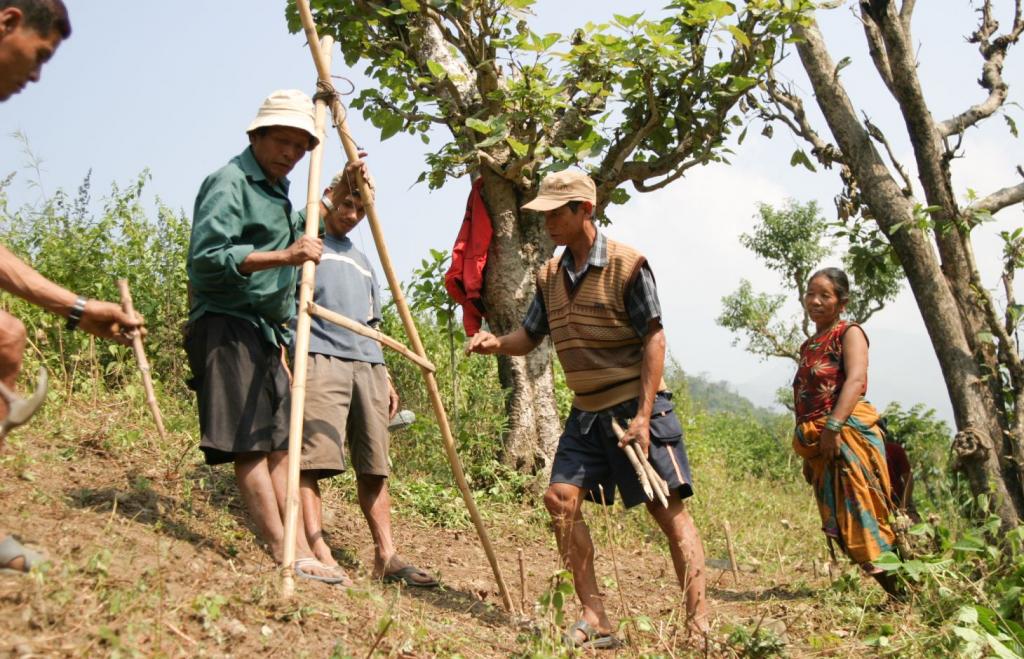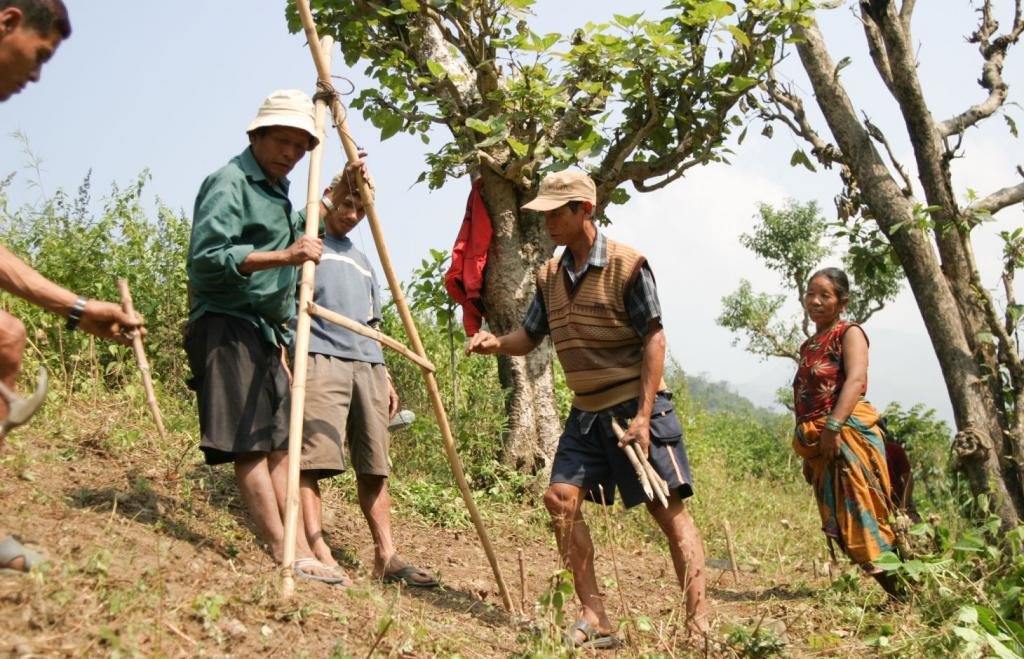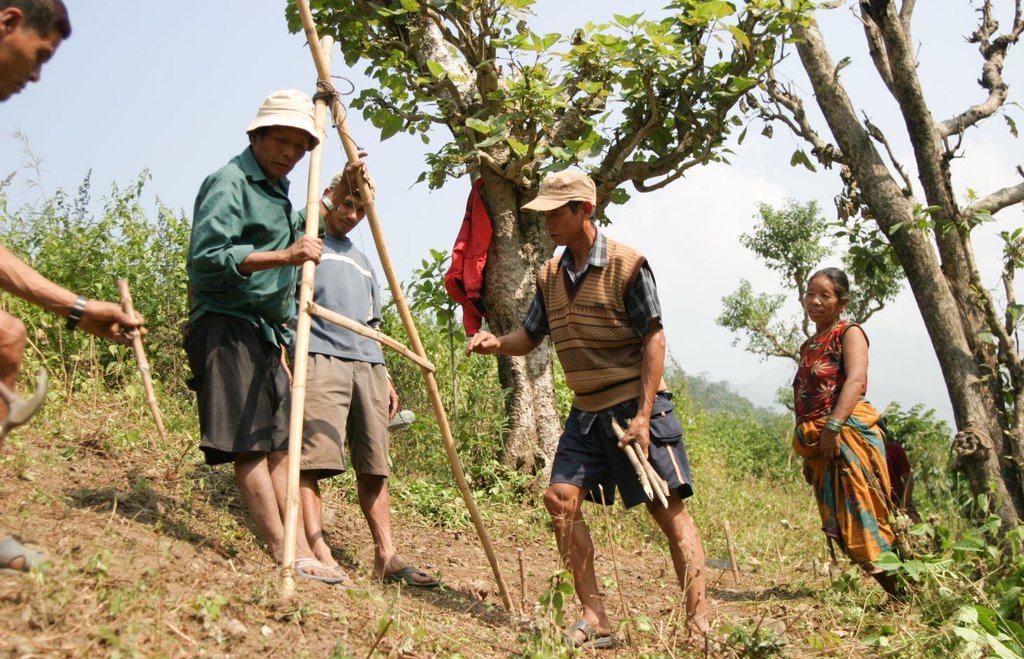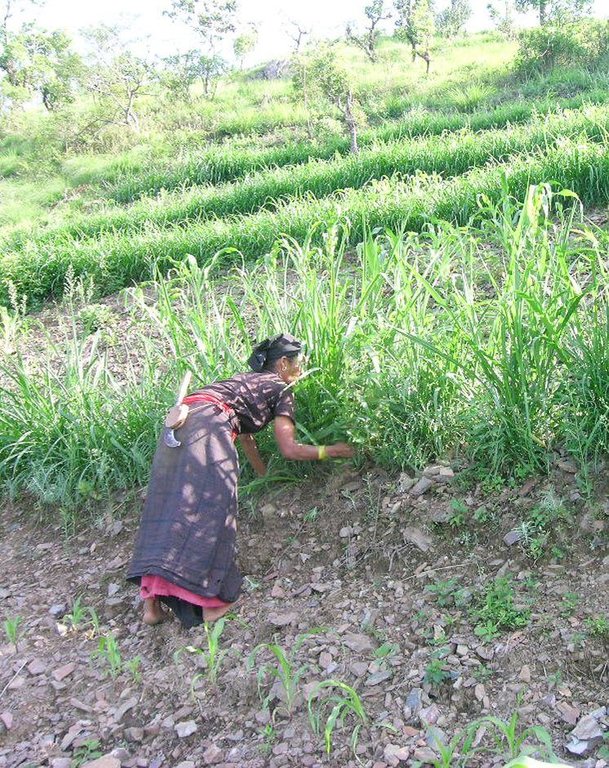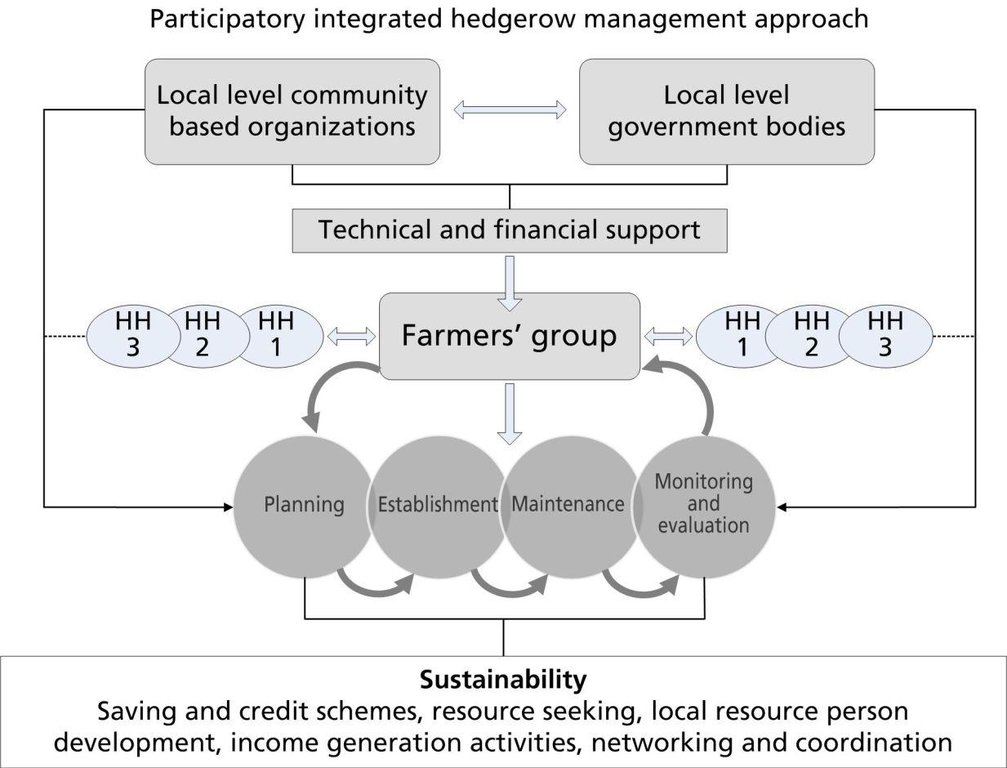Participatory hedgerow management [Непал]
- Создание:
- Обновить:
- Составитель: Shreedip Sigdel
- Редактор: –
- Рецензент: Fabian Ottiger
Sahabhagitamulak ghasehar bewasthapan (Main Contributor: Gyanbandhu Sharma, LI-BIRD)
approaches_2530 - Непал
Просмотреть разделы
Развернуть все Свернуть все1. Общая информация
1.2 Контактные данные специалистов и организаций, участвующих в описании и оценке Подхода
Специалист по УЗП:
Название организации (-ий), содействовавших документированию/оценке Подхода (если применимо)
Local Initiatives for Biodiversity, Research, and Development (LI-BIRD) - НепалНазвание организации (-ий), содействовавших документированию/оценке Подхода (если применимо)
ICIMOD International Centre for Integrated Mountain Development (ICIMOD) - Непал1.3 Условия, регламентирующие использование собранных ВОКАТ данных
Когда были собраны данные (на местах)?
01/03/2013
Составитель и ответственный/-ые специалист(-ы) согласны с условиями, регламентирующими использование собранных ВОКАТ данных:
Да
1.4 Ссылка (-и) на Анкету (-ы) по Технологиям УЗП
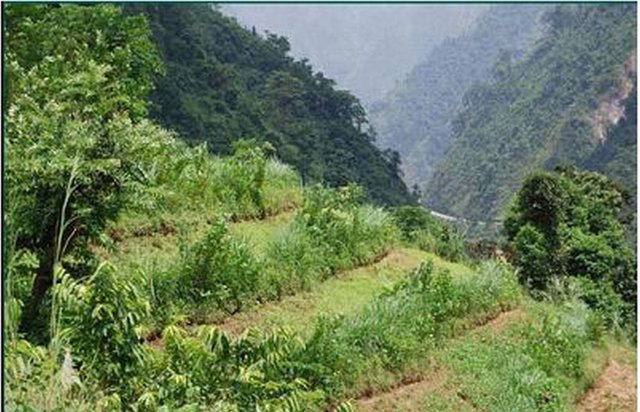
Hedgerow technology [Непал]
A technology that uses hedgerows to help establish terraces on sloping land; farmers learn improved methods to manage a cultivation practice that stabilizes the soil, enhances food production, and adds to on-farm cash income.
- Составитель: Shreedip Sigdel
2. Описание Подхода УЗП
2.1 Краткое описание Подхода
Hedgerow technology can be introduced through the joint participation of farmers, scientists, and related stakeholders. The whole community works together at all stages, including designing, planning, implementation, monitoring and evaluation, and scaling up.
2.2 Подробное описание Подхода
Подробное описание Подхода:
Aims / objectives: Communities can establish better hedgerows by supplementing the traditional knowledge that they have employed for generations with scientific knowledge through a participatory process where both groups are involved in every step of planning, designing, and implementation. This approach recognizes the validity of the local knowledge that farmers have about their land and supplements it with scientific techniques to facilitate the implementation of methods which will yield better results sooner.
Methods: Hedgerow technology can be implemented by forming farmers' groups and using a participatory approach. This technology has the potential to be scaled up and applied on a broader scale. The steps for sharing labour and know-how to establish hedgerows can be summarized as follows:
• Capacity is strengthened through discussions with technical persons.
• Farmers, technical persons, and related stakeholders work together to come up with plans that make the best use of both the farmers’ indigenous knowledge on how to form hedgerows and their understanding of the landscape, and scientific knowledge, for designing and planning.
• The hedgerows are established by the farmers as per the consensual plan.
• Some farmers are designated to periodically inspect the hedgerows and to perform maintenance as needed.
• The technology is scaled up by farmers who disseminate the learning to other farmers through extension and knowledge sharing at different fora.
Stages of implementation: Farmers, technical persons, and related stakeholders were all involved at every stage. In addition, LI-BIRD, local community-based organizations, and other related stakeholders such as the district forest office and the district agriculture office were on hand to support the farmers' group by offering technical and financial resources. The farmers' groups had a vested interest in this approach and demonstrated their commitment by: generating funds from a savings and credit scheme and conducting income generating activities. They also worked to establish effective linkages and to coordinate with related stakeholders to obtain resources which would ensure that the group would be self-reliant in the long run. The involvement of a wide range of participants will ensure that the technology is not only effective but that it is also sustainable. Moreover, when neighbouring communities see how successful this approach can be, it is hoped that they also will adopt the technology.
2.3 Фотографии, иллюстрирующие Подход
2.5 Страна/ регион/ место, где применялся Подход
Страна:
Непал
Более точная привязка места:
Gorkha, Tanahu District
2.7 Тип Подхода
- в рамках проекта/ программы
2.8 Каковы цели/ задачи Подхода
The Approach focused mainly on SLM with other activities (Income generation)
The objective of this approach was to introduce the technology through participatory planning, designing, and implementation by integrating farmers’ knowledge and experiences in the process.
The SLM Approach addressed the following problems: This approach addressed a few of the major problems in the area. The outstanding problems were:
• poor technical knowledge,
• lack of group efforts,
• lack of cash for investment,
• poor access to service providers,
• inadequate use made of farmers' traditional knowledge,
• inadequate knowledge resources, and
• poverty and poor social cohesiveness.
2.9 Условия содействующие применению Технологии/ Технологий в рамках Подхода или затрудняющие его
Наличие/ доступность финансовых ресурсов и услуг
- затрудняют
Farmers had insufficient financial resources to implement the technology
Treatment through the SLM Approach: Farmers learned how to apply for resources from different related stakeholders and they also learned how to generate cash from their own group using savings and credit schemes.
Институциональные условия
- затрудняют
Farmers had no formal institutional mechanisms and also had no capacity to run their institutions
Treatment through the SLM Approach: Farmers learned how to form a formal group and also improved their capacity to run their institutions
Нормативно-правовая база (землевладение, права на земле- и водопользование)
- затрудняют
The existing land ownership, land use rights / water rights hindered a little the approach implementation
Осведомленность в области УЗП, доступность технической поддержки
- затрудняют
Farmers had low technical knowledge
Treatment through the SLM Approach: Farmers shared their know-how and also learned from scientists, other farmers and related stakeholders
3. Участие и распределение ролей заинтересованных сторон
3.1 Заинтересованные стороны, участвующие в реализации Подхода и их роли
- местные землепользователи/ местные сообщества
- эксперты по УЗП/ сельскому хозяйству
- общественные организации
LI-BIRD
- местные власти
- государственные власти (отвечающие за планирование или принятие решений)
Если участвовало несколько заинтересованных сторон, назовите ведущую организацию:
Specialists and land users. During the design process, specialists organized on-farm visits and exposure visits. The plan was prepared jointly by the land users and the specialists who used each others' expertise.
3.2 Участие местных землепользователей/ местных сообществ на разных стадиях реализации Подхода
| Участие местных землепользователей/ местных сообществ | Перечислите участников и опишите их вовлеченность | |
|---|---|---|
| инициирование/ мотивация | пассивное | At the beginning, the land users were mostly passive because they lacked information on sloping land management. |
| планирование | интерактивное | Land users were actively involved in the planning stage and they incorporated feedback from other stakeholders to finalize the action plan. During this phase they also prepared the land and the materials, and recruited the resource person needed to implement the technology |
| выполнение | самоорганизация | Land users were involved in the implementation phase mobilizing their group members and shared the new technical knowledge that they had acquired. |
| мониторинг/ оценка | интерактивное | Land users and other stakeholders remained actively involved throughout the different stages of monitoring and evaluation. |
| Research | внешняя поддержка | Land users were actively involved in research work to test and validate the approach. |
3.3 Схема реализации (если имеется)
3.4 Принятие решений по выбору Технологии/ Технологий УЗП
Укажите, кто принимал решение по выбору применяемой Технологии/ Технологий:
- в основном землепользователи при поддержке специалистов по УЗП
Поясните:
Both farmers and specialist were involved in on-farm visits to assess the condition of the land; farmers attended seminars to acquire new knowledge and they also used this opportunity to share their own knowledge. Farmers and specialists together selected the technology.
Decisions on the method of implementing the SLM Technology were made by mainly by land users supported by SLM specialists
4. Техническая поддержка, повышение компетенций и управление знаниями
4.1 Повышение компетенций/ обучение
Проводилось ли обучение землепользователей/ других заинтересованных лиц?
Да
Укажите, кто проходил обучение:
- землепользователи
- местный персонал/консультанты
- Local Resource Person
Тип обучения:
- обмен опытом между фермерами
- опытные участки
Рассматриваемые темы:
This approach provided training on hedgerow technology and group mobilization to enhance the capacity of land users, field staff, and local resource persons. Site visits to the demonstration areas were also organized for the land users.
4.2 Консультационные услуги
Есть ли у землепользователей возможность получать консультации?
Да
Укажите, где именно оказываются консультационные услуги:
- в постоянно функционирующих центрах
Описание/ комментарий:
Name of method used for advisory service: Group Mobilization Method; Key elements: networking and coordination of farmers' groups with district level line agencies such as the district forest office, the district agriculture office, the district livestock office, and other relevant stakeholders for learning and sharing of information.
4.3 Институциональная (организационная) поддержка
В ходе реализации Подхода были ли организованы новые институциональные структуры или поддержаны уже существующие?
- да, немного
Укажите уровень, на котором структуры были укреплены или вновь созданы:
- местные
Укажите тип поддержки:
- повышение компетенций/ обучение
Подробнее:
Trainings and sessions on capacity building were provided to the land users
4.4 Мониторинг и оценка
Являются ли мониторинг и оценка частью Подхода?
Да
Комментарии:
bio-physical aspects were regular monitored by project staff, land users through observations; indicators: The land users and project staff made regular observations of sediment deposition rates after the intervention.
technical aspects were regular monitored by project staff, land users through observations; indicators: The land users and project staff made regular observations on the formation of terraces and control of erosion.
socio-cultural aspects were regular monitored by project staff, land users through observations; indicators: The land users and project staff regularly observed sociocultural impacts
economic / production aspects were regular monitored by project staff, land users through observations; indicators: The land users and project staff regularly observed the extent to which the income of the land users changed.
area treated aspects were regular monitored by government, land users through measurements; indicators: The land users and government staff monitored the coverage of the technology.
no. of land users involved aspects were regular monitored by project staff, land users through observations; indicators: Regular observations were made by the land users and project staff on how many land users were adopting the technology.
management of Approach aspects were regular monitored by project staff, land users through observations; indicators: The land users and project staff regularly observed how well the group functioned together and how well they linked with stakeholders
There were few changes in the Approach as a result of monitoring and evaluation: Monitoring brought few changes; farmers used the information gathered during monitoring of on-farm demonstration to help them select the species they preferred but the technology remained the same.
There were no changes in the Technology as a result of monitoring and evaluation
4.5 Научные исследования
Были ли научные исследования частью Подхода?
Да
Укажите темы исследований:
- технология
Напишите подробнее и назовите тех, кто выполнял исследования:
On-farm technical research was a part of the approach applied by land users, specialists, and relevant stakeholders who were involved in hedgerow technology trials.
Research was carried out on-farm
5. Финансирование и внешняя материальная поддержка
5.1 Годовой бюджет мероприятий по УЗП в рамках Подхода
Комментарий (например, основные источники финансирования/ ключевые доноры):
Approach costs were met by the following donors: national non-government: 20.0%; local government (district, county, municipality, village etc): 10.0%; local community / land user(s): 70.0%
5.2 Финансирование и внешняя материальная поддержка, предоставляемая землепользователям
Предоставлялась ли землепользователям финансовая/ материальная поддержка для применения Технологии /Технологий?
Да
Если да, укажите тип(-ы) поддержки, кто ее предоставил и условия предоставления:
LI-BIRD provided some support.
5.3 Субсидии на отдельные затраты (включая оплату труда)
Если труд землепользователя был существенным вкладом, укажите, был ли этот вклад:
- добровольный
5.4 Кредитование
Предоставлялись ли в рамках Подхода кредиты на мероприятия УЗП?
Нет
6. Анализ влияния и заключительные положения
6.1 Влияние Подхода
Сумел ли Подход помочь землепользователям внедрить и поддерживать технологии УЗП?
- Нет
- Да, немного
- Да, умеренно
- Да, существенно
This approach helped to stabilize the fragile hill slopes.
Сумел ли Подход расширить возможности социально и экономически уязвимых групп?
- Нет
- Да, немного
- Да, умеренно
- Да, существенно
The capacity of marginal ethnic groups increased; they learned how local institutions function and felt empowered to seek resources from their service providers.
Did other land users / projects adopt the Approach?
- Нет
- Да, немного
- Да, умеренно
- Да, существенно
This approach was adopted by adjoining villagers and scaled up gradually in Dhading, Chitwan, Nawalparasi, and Makwanpur Districts. According to preliminary information, at least 450 households have now adopted this approach for sustainable land management.
Did the Approach lead to improved livelihoods / human well-being?
- Нет
- Да, немного
- Да, умеренно
- Да, существенно
This approach helped to improve the livelihood status of the land users by helping to diversify their options for income generation and skills development.
Did the Approach help to alleviate poverty?
- Нет
- Да, немного
- Да, умеренно
- Да, существенно
After the implementation of this approach, land users could earn cash income and learned how to increase their capacity to implement income generating activities which would enhance their livelihoods.
6.2 Основные причины, побуждающие землепользователей внедрять УЗП
6.3 Долгосрочная устойчивость мероприятий в рамках Подхода
Могут ли землепользователи самостоятельно (без внешней поддержки) продолжать применение того, что было реализовано в рамках Подхода?
- нет уверенности
Если нет или нет уверенности, объясните почему:
Individual land users were enthusiastic to implement the approach and to take it further. Land users who are shifting cultivators, and who typically have no land ownership, are slower to embrace the approach.
6.4 Сильные стороны/ преимущества Подхода
| Сильные стороны/ преимущества/ возможности по мнению составителя или других ключевых специалистов |
|---|
| Sustained capacity building (How to sustain/ enhance this strength: Continue to build strong links and coordinate with government line agencies) |
| Improved access to services providers helped to enhance their capacity to cope with adverse conditions (How to sustain/ enhance this strength: Continue to build and maintain contact with government line agencies) |
| Local institutions were strengthened (How to sustain/ enhance this strength: Established formal institutions and help to sustain them) |
| Land users actively participated and took ownership (How to sustain/ enhance this strength: Continue capacity building and training. At present the government is initiating programmes with leasehold forest groups in Gorkha and Tanahu Districts that encourages the establishment hedgerows è Work to mainstream the approach within government programmes) |
| Collaboration helped land users to sustain their efforts (How to sustain/ enhance this strength: Continue to build a sense of community between land users) |
6.5 Слабые стороны/ недостатки Подхода и пути их преодоления
| Слабые стороны/ недостатки/ риски по мнению составителя или ответственных специалистов | Возможные пути их преодоления/снижения? |
|---|---|
| Difficult to develop common understanding | Organized regular learning and sharing to develop common understanding |
|
Farmers have only a limited understanding of the skills needed |
Continue to strengthen farmers' groups and continue to mobilize through sharing and learning |
| The approach is resource intensive. | Promote savings and credit schemes with farmers' groups. Mobilize farmers' groups so that they can petition other groups and line agencies for resources. |
| Time consuming | Work with land users to improve their time management and their ability to plan future activities and delegate responsibilities |
| Few farmers participated during the initial stages | Conduct awareness raising activities and promote activities that give some tangible benefits in the short term. |
7. Справочные материалы и ссылки
7.1 Методы сбора/источники информации
- выезды на места, полевые обследования
- опросы землепользователей
7.2 Ссылки на опубликованные материалы
Название, автор, год публикации, ISBN:
Building on partnership approaches in participatory identification of integrated agricultural technological packages suitable for sloping land areas (unpublished), Regmi, BR; Aryal, KP; Shrestha, PK; Tamang, BB (2003)
Где опубликовано? Стоимость?
LI-BIRD
Ссылки и модули
Развернуть все Свернуть всеСсылки

Hedgerow technology [Непал]
A technology that uses hedgerows to help establish terraces on sloping land; farmers learn improved methods to manage a cultivation practice that stabilizes the soil, enhances food production, and adds to on-farm cash income.
- Составитель: Shreedip Sigdel
Модули
Нет модулей


